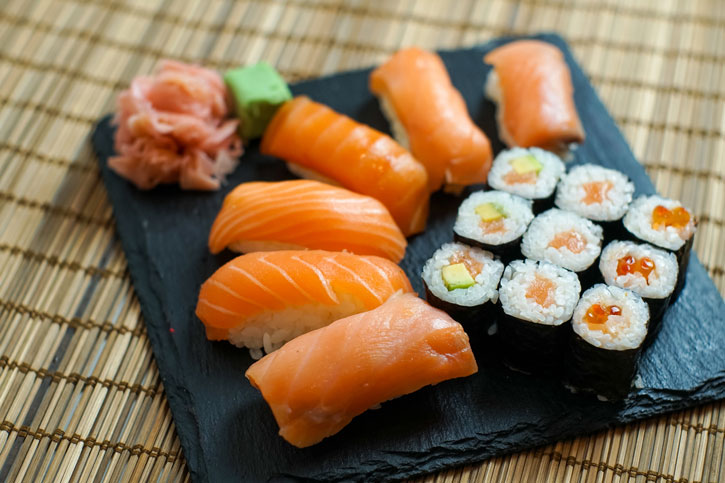Japanese cuisine is trending, thanks to the quality of its raw ingredients, the precise and delicate technique used in its preparation, the elegance of its presentations, and above all, the flavor. Moreover, the Japanese diet is considered one of the healthiest in the world.
The capital of Spain has become one of the most important capitals in terms of gastronomic offerings. And of course, you will find in Madrid some of the best places to enjoy Japanese and fusion cuisine. In fact, the selection is so extensive that it can be challenging to choose.
For me, narrowing down to just 10 this list of my favorite restaurants in Madrid has been a challenge. I have considered not only the food but also the overall experience, including the ambiance, decoration, and service received.
Table of contents
Top 10 Japanese Restaurants in Madrid
1. Sibuya
Address: C. Santo Tomé 5, 28004, Madrid (and other locations)
Phone: +34 913 198 393
Website: https://sibuyaurbansushibar.com/
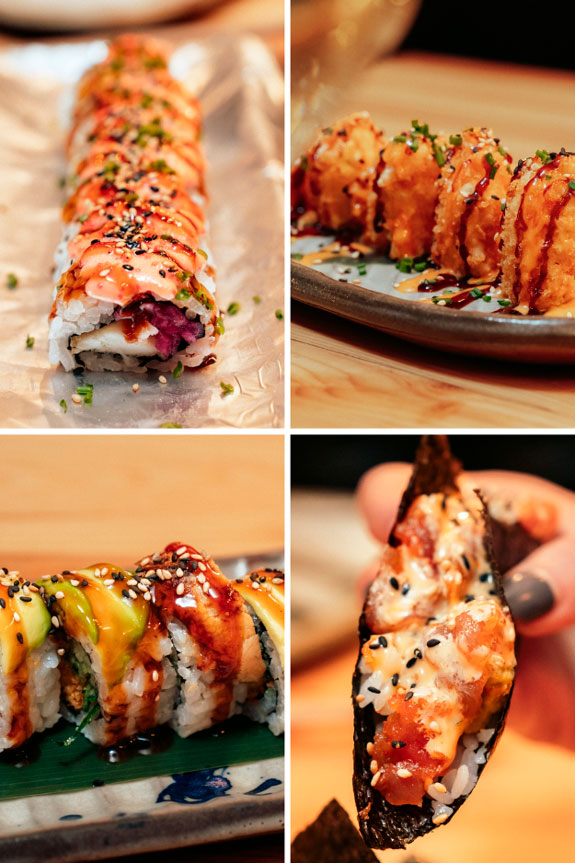
The success of Sibuya speaks for itself. Not only have they opened several establishments in the capital city of Madrid and its surroundings, but you can also sample their dishes in many other Spanish cities.
Their venues feature simple yet original decor. One of the reasons for their success is undoubtedly their gastronomic offering of reinterpretated Japanese cuisine, with innovative recipes at very reasonable prices. I am lucky to have a Sibuya restaurant right next door, and it has become one of my favorite Japanese restaurants in Madrid.
It is hard to go wrong with ordering, but among my favorites, I would include the “Ebi Furai”, the Crab Bao, the tuna sashimi, and the “Sibuya Flamed rolls”.
2. Masa Naomi
Address: C. Ávila 14, 28020, Madrid
Phone: +34 915 722 304
Website: https://www.restaurantemasanaomi.com/
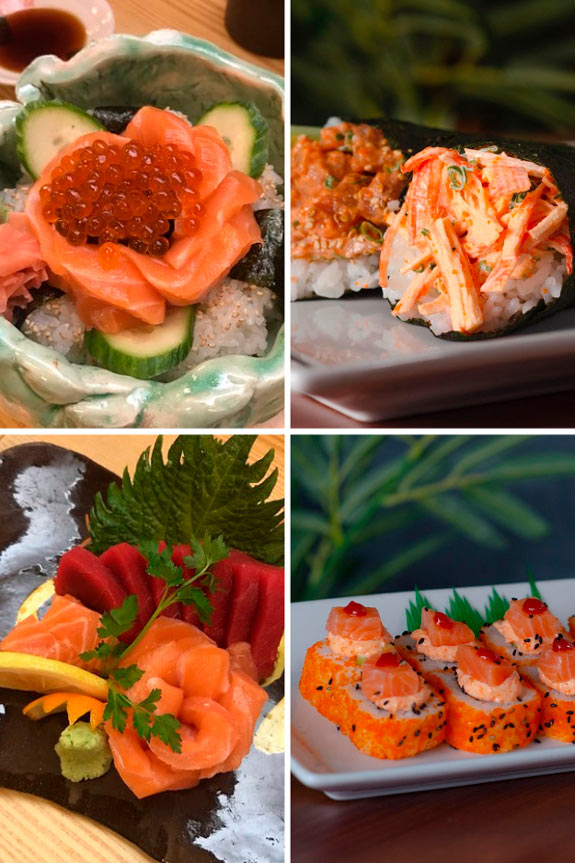
Masa Naomi is a warm and authentic Japanese family-owned establishment that truly embodies the essence of Japanese cuisine as a reflection of the country’s culture. It stands as one of the oldest Japanese restaurants in Madrid and has helped me grow to really enjoy this kind of food.
The interior is characterized by a sushi bar, light wooden sliding doors, and a few Western-style tables and low tables for patrons seeking an authentic Japanese dining experience.
The menu offers a sensible selection of dishes with flavors recognizable to those familiar with Japanese gastronomy. Due to its small size, reservations are recommended to secure a table.
3. Umiko
Address: C. Madrazo 6, 28014, Madrid
Phone: +34 914 938 706
Website: https://umiko.es/
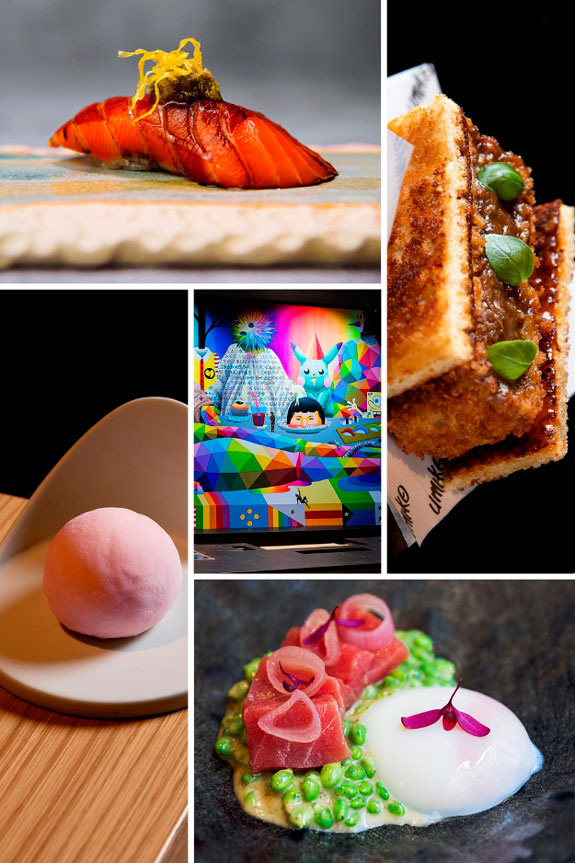
In my opinion, the word that best describes Umiko is “creativity”. Or “fusion”, because here you won’t find a traditional Japanese restaurant, but rather an inspiration where, using rice and based on sushi, they integrate other aspects of Mediterranean and even Latin American cuisine, resulting in a harmony of new flavors.
The menu consists of surprising and flavorful dishes that continuously change, adapting to each season. As an additional point, inside the venue, you will find a mural by urban artist Okuda San Miguel, known for some of the best graffiti in Madrid.
4. Hotaru
Address: C. Alcalá 99, 28009, Madrid
Phone: +34 911 171 799
Website: https://hotarumadrid.com/
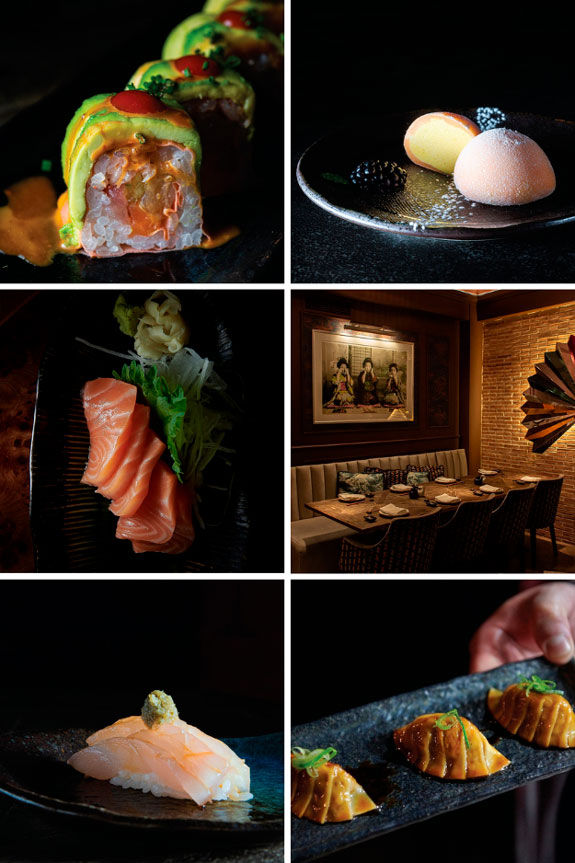
Hotaru is a recent find among Japanese restaurants in Madrid. A friend recommended it, so I decided to celebrate my last birthday there. Let me tell you that it is a restaurant that won’t disappoint you. What’s more, it is conveniently situated right by El Retiro Park, making it the ideal spot for a day out.
The restaurant offers an intimate, tranquil, and welcoming atmosphere, with excellent service from the staff. The gastronomic proposal stands out for its genuine fusion of flavors from Japanese cuisine with ingredients from cuisines around the world.
When it comes to ordering, I would suggest, like us, you let yourself be guided, but I personally believe the “tuna ronqueo sashimi” is a must-try.
5. 99 Sushi Bar
Address: Hotel NH Collection Madrid Eurobuilding
Phone: +34 913 593 801
Website: https://www.99sushibar.com/en/
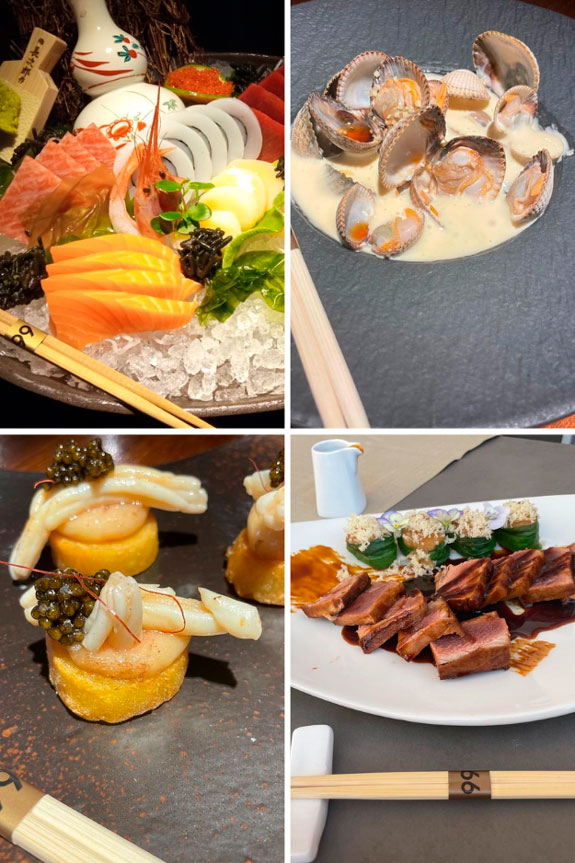
99 Sushi Bar is a chain of Japanese restaurants with several locations in Madrid, as well as in other Spanish cities like Barcelona, and also outside of Spain in Dubai, Abu Dhabi, and Rabat.
This establishment has become a classic in the capital for its gastronomic proposal, specially designed to combine the most emblematic flavors and textures of high Japanese cuisine with Mediterranean flavors.
No matter your preferences, here you will find everything from the most classic dishes to more avant-garde and innovative proposals.
Additionally, if you want to complete your evening with a spectacular Real Madrid soccer match, one of the locations is situated in the NH Collection Madrid Eurobuilding, one of the best hotels near the Santiago Bernabeu Stadium.
6. Miyama
Address: P.º de la Castellana 45, 28046, Madrid
Phone: +34 913 910 026
Website: https://www.restaurantemiyama.com/
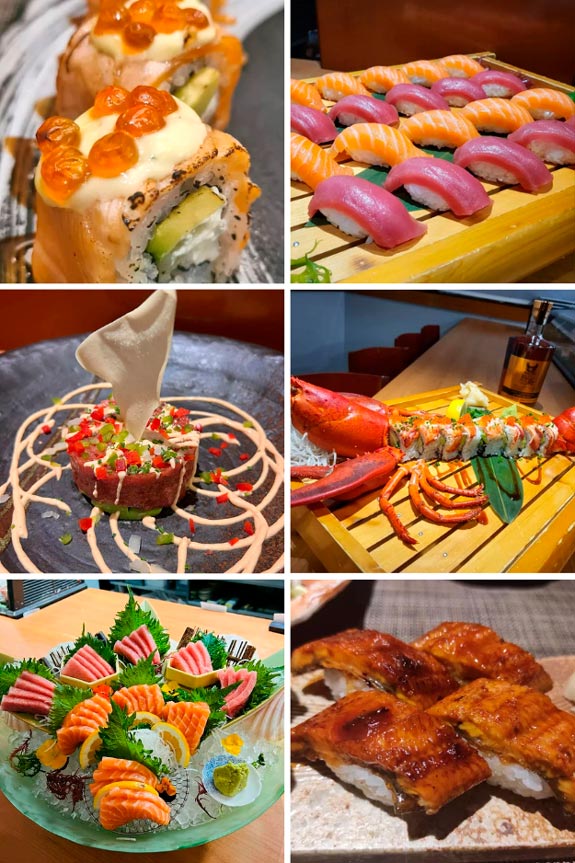
Miyama is not just one of my favorite Japanese restaurants in Madrid, but any local enthusiast of Asian cuisine will tell you it is one of the go-to Japanese spots in the capital.
Miyama is known for infusing innovation into its dishes, both in preparation and presentation. They offer contemporary Japanese cuisine, characterized by high quality and balanced, pure flavors.
The menu is extensive and includes popular dishes such as tataki, sashimi, nigiri, maki, stews, soups, and other specialties.
7. Yugo The Bunker
Address: C. San Blas 4, 28014, Madrid
Phone: +34 914 449 034
Website: https://yugothebunker.com/
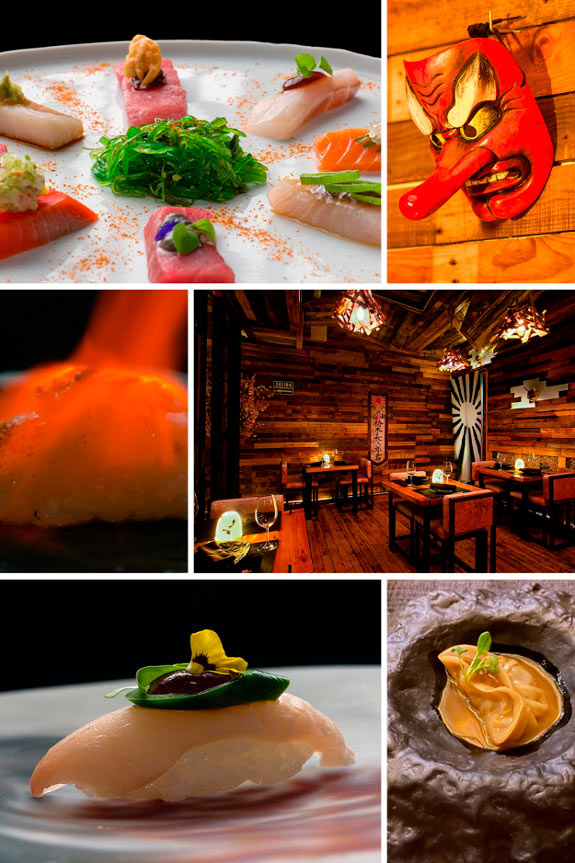
Let’s now explore a distinctive and unique restaurant, notable for its design, culinary proposal, and also its price. In this case, Yugo the Bunker has been awarded a Michelin Star and offers the very best with the use of exclusive, high-end products.
Yugo the Bunker blends Japanese and Mediterranean cuisine while maintaining a clear Japanese style, both in its philosophy and in the absolute care with which it treats the product and every detail. The restaurant offers two tasting menus.
The average bill might be slightly higher than the average Japanese restaurant in Madrid, but it is a great option for celebrations and special occasions. This is also one of the best spots to eat sushi in Madrid.
8. Sto Globo Sushi Room
Address: C. Sta. Teresa 8, 28004, Madrid
Phone: +34 917 793 452
Website: https://www.stoglobo.es/
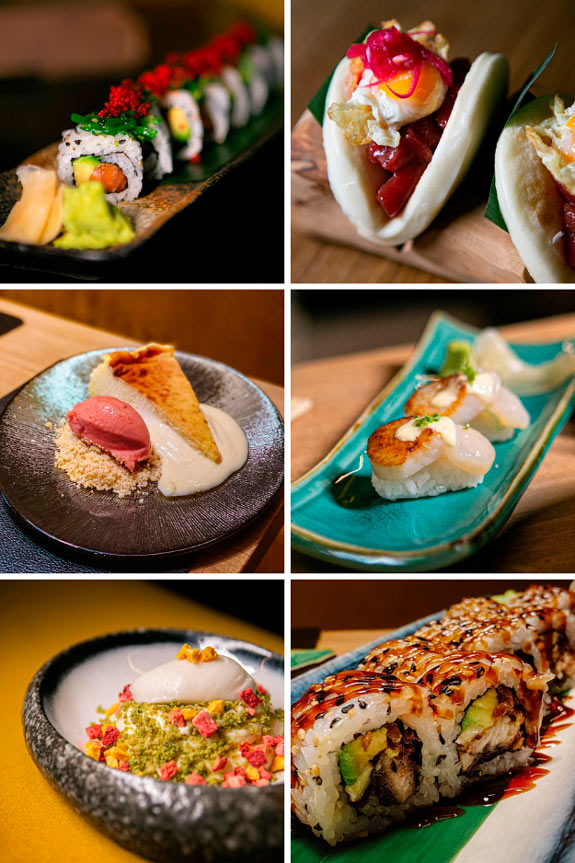
And now, I would like to introduce you to a hidden gem that is equally worth your attention. Housed in a cozy, intimate space, this spot may not be widely known, but it boasts a varied menu and meticulous attention to detail.
On their menu, you will find everything from shareable starters like baos, gyozas, and of course, edamame, to uramaki, nigiri, and sashimi. Additionally, you will find tuna, salmon, and steak tartare. Personally, I am not particularly fond of cheesecakes, but it is one of their specialties.
9. Nomo Braganza
Address: C. Bárbara de Braganza 8, 28004, Madrid
Phone: +34 910 887 574
Website: https://gruponomo.com/restaurantes/nomo-braganza/
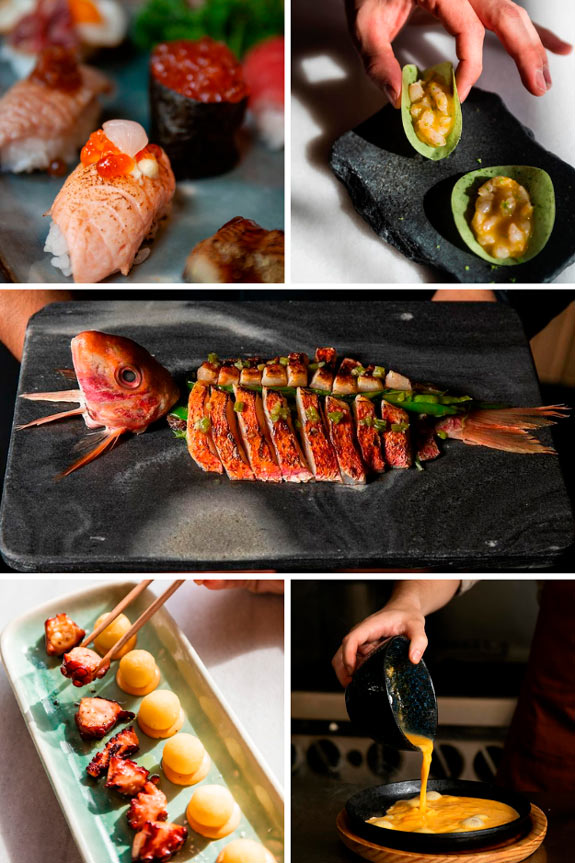
I feel fortunate to have many excellent Japanese restaurants in Madrid, and Nomo is undoubtedly one of the best with its original Japanese cuisine proposal using local products.
The restaurant space is divided into two floors. There is a bar upstairs where you can observe the skill of the sushi chefs, while downstairs offers a quieter space.
Nomo’s menu is extensive, featuring all the specialties of Japanese gastronomy. Their most popular dishes include the oxtail croquette breaded in panko, any of the gyozas, the Spicy Tuna futomaki, the Maguro tuna tartare taco, and the “salmonete no tataki”.
10. Pilar Akaneya
Address: C. Espronceda 33, 28003, Madrid
Phone: +34 913 307 699
Website: https://pilarakaneya.com/
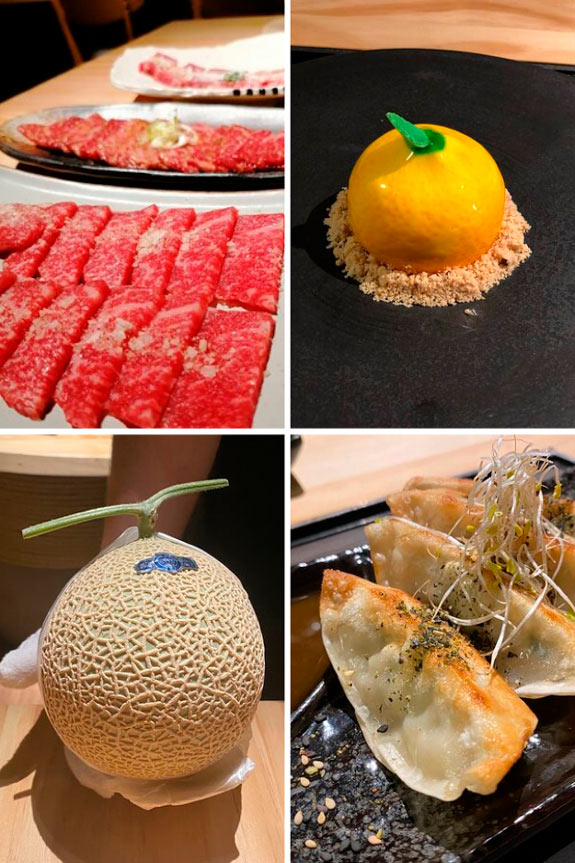
I wanted to conclude this list of the best Japanese restaurants in Madrid with something different and exclusive, for a unique and special occasion.
Pilar Akaneya is one of the few restaurants in Spain that serves certified wagyu as Kobe Beef and the only one that offers ‘Crown melon’, an exclusive fruit that costs 200 euros per piece.
The quality of the product is complemented by the traditional cooking method. The tables have charcoal BBQs in the center where diners can grill their own cuts of wagyu. There are 3 different tasting menus ranging from 90 to 390 euros.
You know, you only live once, and Pilar Akaneya offers a truly unique dining experience.
Typical Japanese Foods
Embarking on a culinary journey through Japanese cuisine can be both exciting and enriching, especially for first-timers eager to explore the diverse flavors and textures that this culinary tradition has to offer.
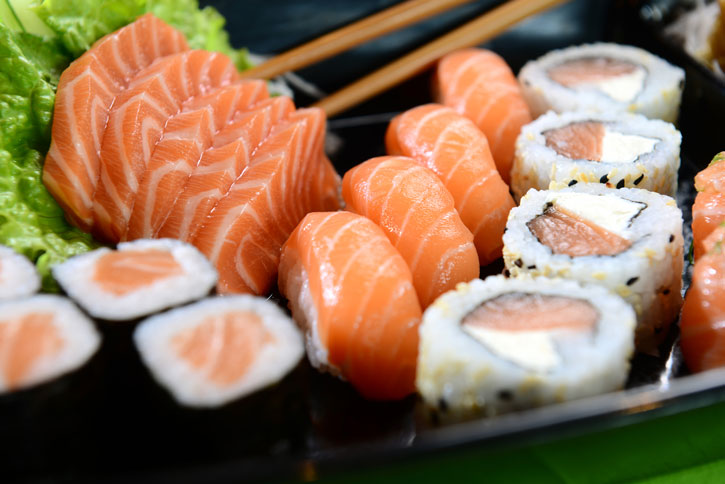
Here’s a brief overview of some of the most popular dishes you are likely to encounter when attending the best Japanese restaurants in Madrid:
- Edamame: These young soybeans are boiled or steamed and served with a sprinkle of salt. They make for a delightful and nutritious appetizer.
- Miso Soup: A comforting broth made from fermented soybean paste, miso soup typically contains tofu cubes, seaweed, and sometimes scallions. It is a staple in Japanese cuisine, enjoyed as a starter to many meals.
- Gyoza: These savory dumplings are typically filled with minced meat (often pork), vegetables, and seasonings, then pan-fried or steamed. They are often dipped in a soy-based sauce.
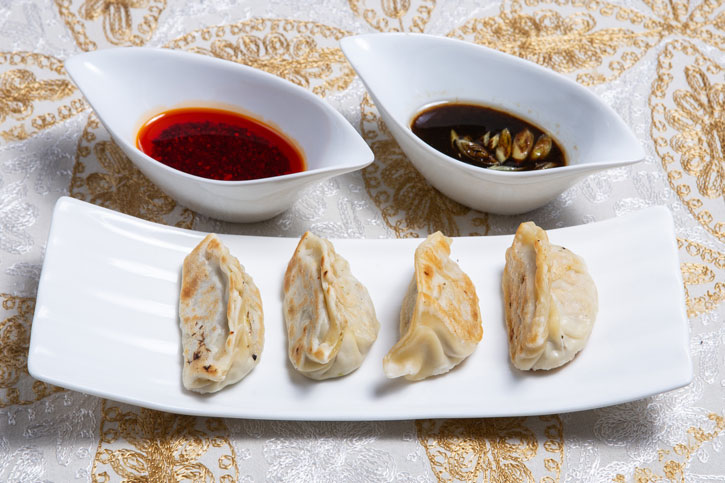
- Wakame Salad: A refreshing and nutritious salad featuring wakame seaweed often served with additional ingredients such as cucumber, sesame seeds, and sliced scallions.
- Sushi: Sushi encompasses a wide range of bite-sized delights, including:
- Maki: Rolled sushi, typically filled with ingredients like fish, vegetables, and rice, then wrapped in seaweed.
- Temaki: Hand-rolled sushi cones filled with various ingredients and wrapped in seaweed.
- Uramaki: Inside-out sushi rolls where the rice is on the outside and the nori (seaweed) is on the inside, often topped with fish roe or sesame seeds.
- Nigiri: Hand-pressed sushi rice topped with slices of raw fish or seafood.
- Futomaki: Thick sushi rolls typically contain multiple fillings.
- Gunkan: Sushi rice wrapped with a strip of seaweed and topped with ingredients like roe or seafood.
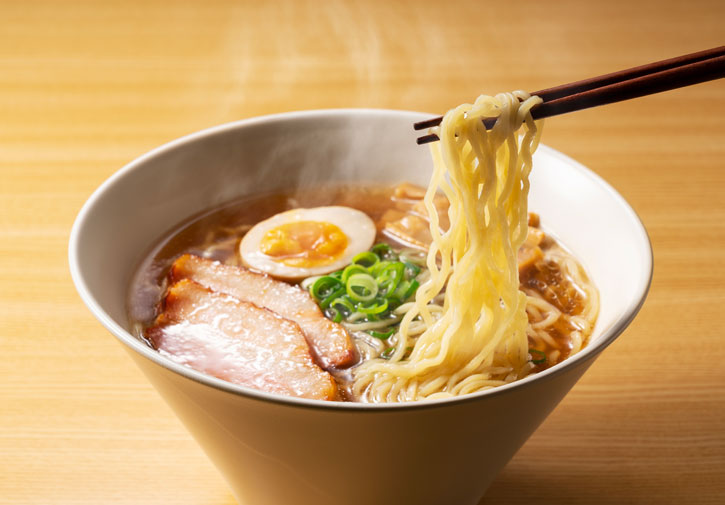
- Sashimi is a traditional Japanese dish consisting of thinly sliced raw fish or seafood, typically served without rice. Sashimi is typically accompanied by soy sauce for dipping, as well as wasabi and pickled ginger. It is not considered sushi because it does not contain rice.
- Tataki: A cooking technique where meat or fish is briefly seared over high heat, leaving the center rare or raw.
- Wagyu: Known for its exceptional marbling and tenderness, Wagyu beef is highly prized in Japanese cuisine.
- Ramen: A soul-warming noodle soup featuring a rich broth, chewy noodles, and various toppings such as sliced pork, soft-boiled eggs, and green onions.
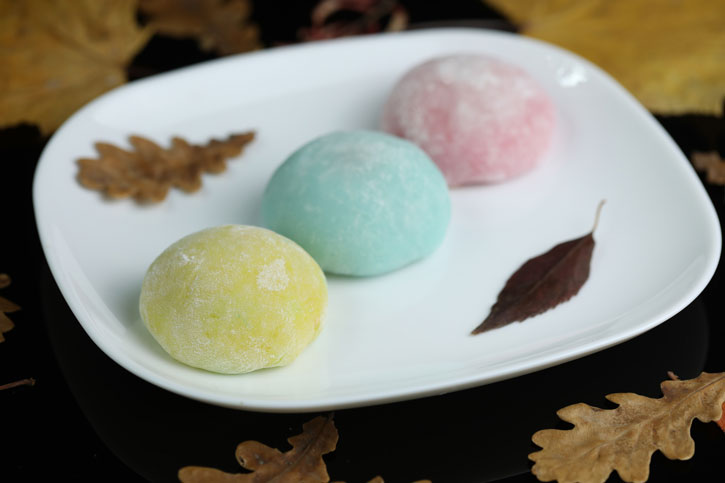
- Teppanyaki: A style of Japanese cuisine where ingredients are grilled on a flat iron griddle, often in a theatrical manner by skilled chefs. Teppanyaki dishes typically include meats, seafood, and vegetables cooked with precision.
- Mochi: A delightful Japanese treat made from glutinous rice pounded into a sticky paste, then molded into small cakes or balls. Mochi can be enjoyed plain or filled with sweet fillings like red bean paste, chocolate, fruit, or ice cream.
No exploration of Japanese cuisine would be complete without acknowledging the significance of soy sauce.
Soy sauce adds depth of flavor, richness, and a touch of umami to many Japanese dishes, serving as a versatile seasoning and dipping sauce. It plays a pivotal role in enhancing the overall dining experience in the top-rated Japanese restaurants in Madrid.

